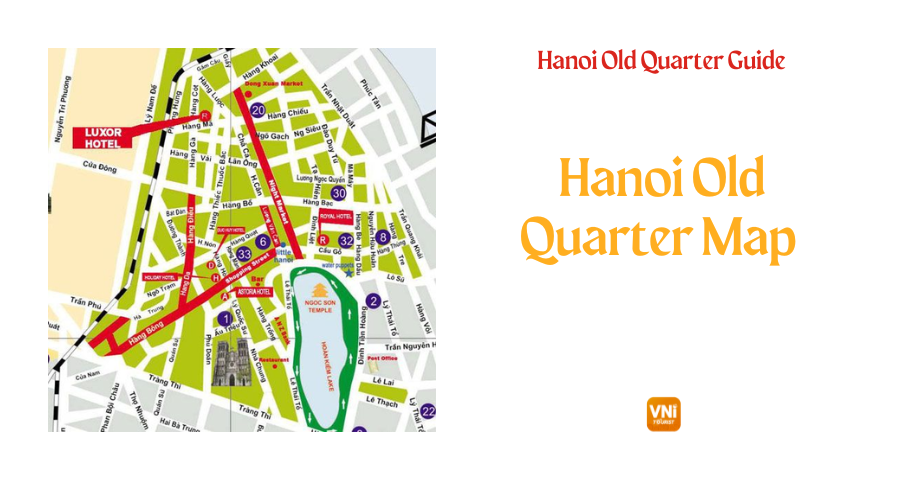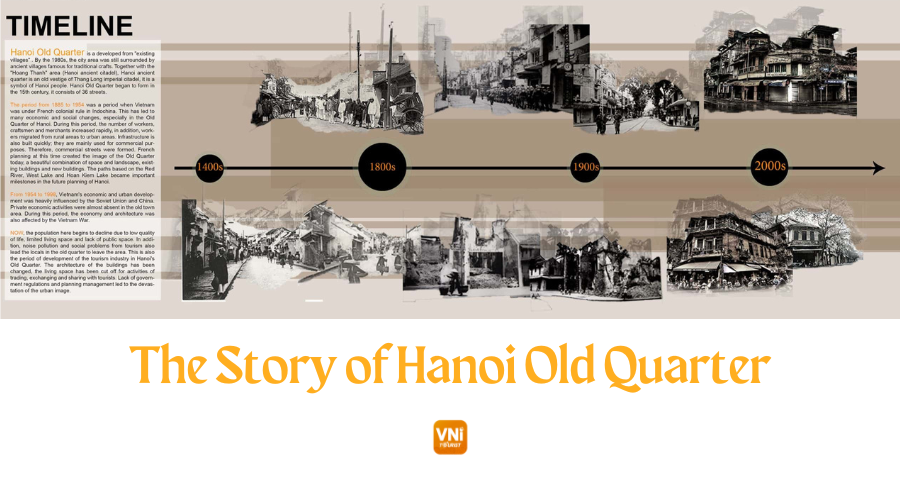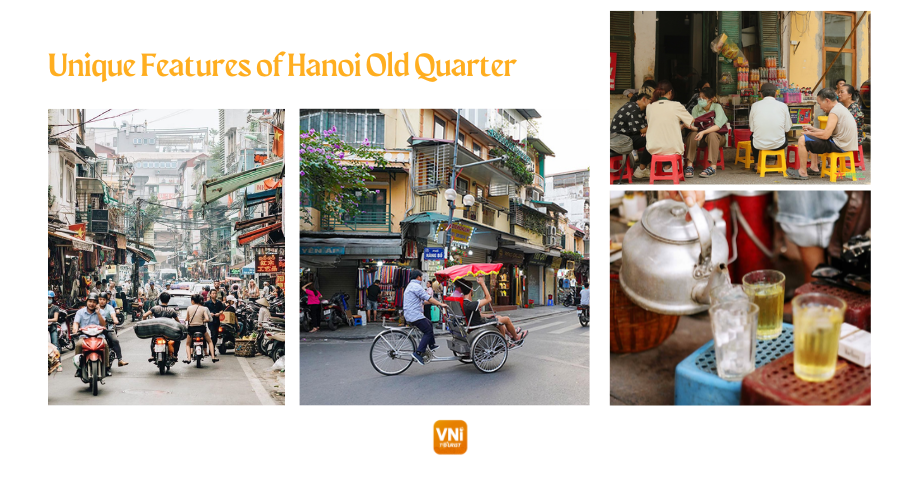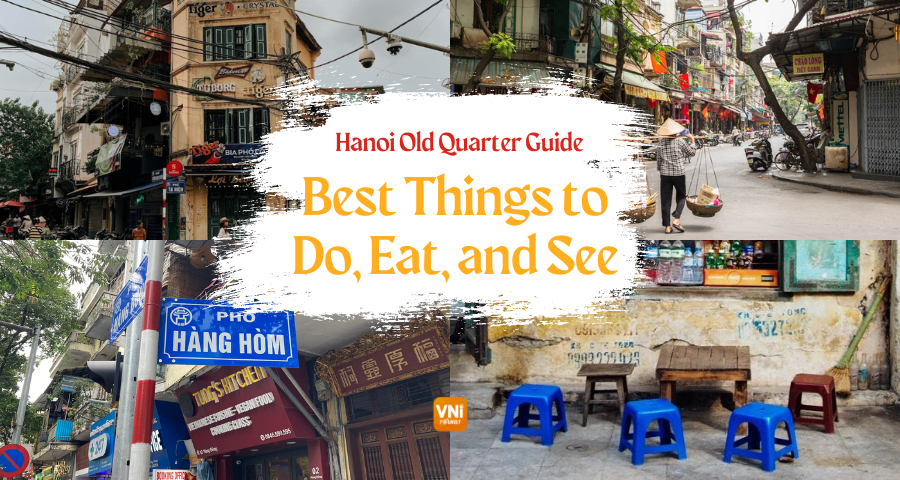Hanoi Old Quarter Guide: Best Things to Do, Eat, and See
Hanoi Old Quarter, with its maze of narrow streets, ancient architecture, and bustling markets, is the heart of Vietnam’s capital. Whether you’re seeking authentic street food, shopping for traditional crafts, or diving into Hanoi’s deep cultural history, the Old Quarter has something for everyone. In this guide, we’ll walk you through the best attractions, dining spots, and unforgettable experiences that this vibrant area has to offer.
Charm of Hanoi Old Quarter: A Complete Review
Where is Hanoi Old Quarter?

Hanoi Old Quarter is situated in the heart of the city, near the iconic Hoan Kiem Lake. The area spans 36 streets, each historically associated with a particular trade or craft, such as silk, silver, and ceramics. This compact and lively district is surrounded by major landmarks like the French Quarter, Dong Xuan Market, and St. Joseph’s Cathedral, making it a central spot for tourists to explore.
Why is it So Popular?
Hanoi Old Quarter is beloved for its vibrant mix of history, culture, and local life. Its narrow streets are packed with vendors, traditional shops, and street food stalls, offering an immersive experience of Hanoi’s heritage. Visitors can sample authentic Vietnamese dishes, shop for handicrafts, and visit centuries-old temples. The lively atmosphere, especially at night with its bustling night markets and lively cafes, attracts tourists and locals alike.
The Story of Hanoi Old Quarter
The Old Quarter’s history dates back over a thousand years, beginning as a commercial hub for artisans and traders. Each street was dedicated to a specific craft or trade, and their names reflect these origins—such as Hang Bac (Silver Street) and Hang Gai (Silk Street). Over the centuries, the area has evolved but retains its distinct charm. Despite modernization, you can still feel the essence of ancient Hanoi in its architecture, craft traditions, and community spirit.

Unique Features of Hanoi Old Quarter

The Hanoi Old Quarter, known for its 36 ancient streets, preserves the essence of the old Thang Long Citadel. Walking through its bustling alleys, you’ll get a glimpse of Hanoi’s rich culture and history.
The standout feature of the Old Quarter is its craft streets. Skilled artisans from villages around the citadel came together to create specialized craft areas. Today, these streets still maintain their traditional trades.
Here are some of the famous craft streets:
- Hang Bong Street: Known for quilts, blankets, and cushions.
- Hang Bac Street: Specializes in gold and silver jewelry.
- Hang Dao Street: Famous for selling fabrics of all kinds.
- Hang Ma Street: Offers votive paper, festival decorations, and toys.
- Hang Quat Street: Known for selling religious offerings.
- Hang Buom Street: Specializes in sweets and jams for the Tet holiday.
- Hang Thiec Street: Known for metalworking, producing household items.
- Ma May Street: Offers travel and tourism services.
How to Go to Hanoi Old Quarter
Hanoi Old Quarter is easily accessible from various parts of the city. Taxis, motorbike taxis, and buses frequently service the area. Ride-hailing apps like Grab are convenient for booking a quick ride to the Old Quarter. For a more authentic experience, consider renting a bicycle or taking a cyclo (rickshaw) tour. The area is also perfect for walking, especially if you’re staying nearby in the French Quarter or Hoan Kiem area. Guided walking tours are another great way to explore its rich history and hidden gems.
My Real Experience at Hanoi Old Quarter
Visiting Hanoi’s Old Quarter felt like stepping back in time. The narrow streets are alive with activity, from vendors selling fresh fruits to artisans crafting traditional goods. I spent hours exploring, stopping by Hang Bac Street for unique silver jewelry and enjoying the vibrant atmosphere of Hang Ma Street with its colorful festival decorations. Street food stalls were everywhere, offering some of the best pho and bun cha I’ve ever tasted. The mix of old-world charm and modern hustle made the experience unforgettable. I also found that the locals were friendly, though the streets can get crowded, especially during weekends.
Tips for Tourists
- Stay alert: The Old Quarter can get crowded, so keep an eye on your belongings.
- Bargain smartly: Vendors expect some haggling, but be polite and respectful.
- Plan a walking route: The streets can be confusing, so have a map or use GPS.
- Explore the side alleys: You’ll find hidden gems, like unique cafes and boutiques.
- Stay hydrated: The weather can be hot, so keep a bottle of water handy.
With a little preparation, your visit to the Old Quarter will be even more enjoyable.
How to Choose an Accommodation Near Hanoi Old Quarter
- Location: Find accommodation within walking distance of Beer Street and other attractions.
- Noise: Choose a quieter street nearby if you want to avoid loud night scenes.
- Budget: Look for places that match your budget, from hostels to boutique hotels.
- Reviews: Check guest reviews to confirm quality and cleanliness.
- Use Apps for Easy Booking: Apps like Booking.com, Agoda, or Airbnb make it simple to compare prices, amenities, and guest reviews. Many of these platforms offer filters for location, budget, and specific amenities, helping you find the best deal for your stay.
Conclusion
Hanoi Old Quarter is truly a must-visit destination for anyone traveling to the city. Its vibrant mix of history, culture, and daily life offers an authentic glimpse into Vietnam’s heritage. Whether you’re shopping for traditional crafts, enjoying local street food, or simply soaking in the bustling atmosphere, there’s always something to discover in the Old Quarter.
Ready to explore Hanoi Old Quarter? Plan your trip today and dive into the heart of Hanoi’s culture. Don’t miss out on the lively weekend night market, delicious street food, and the charm of traditional craft streets! Book your stay nearby for easy access to everything the Old Quarter has to offer.

